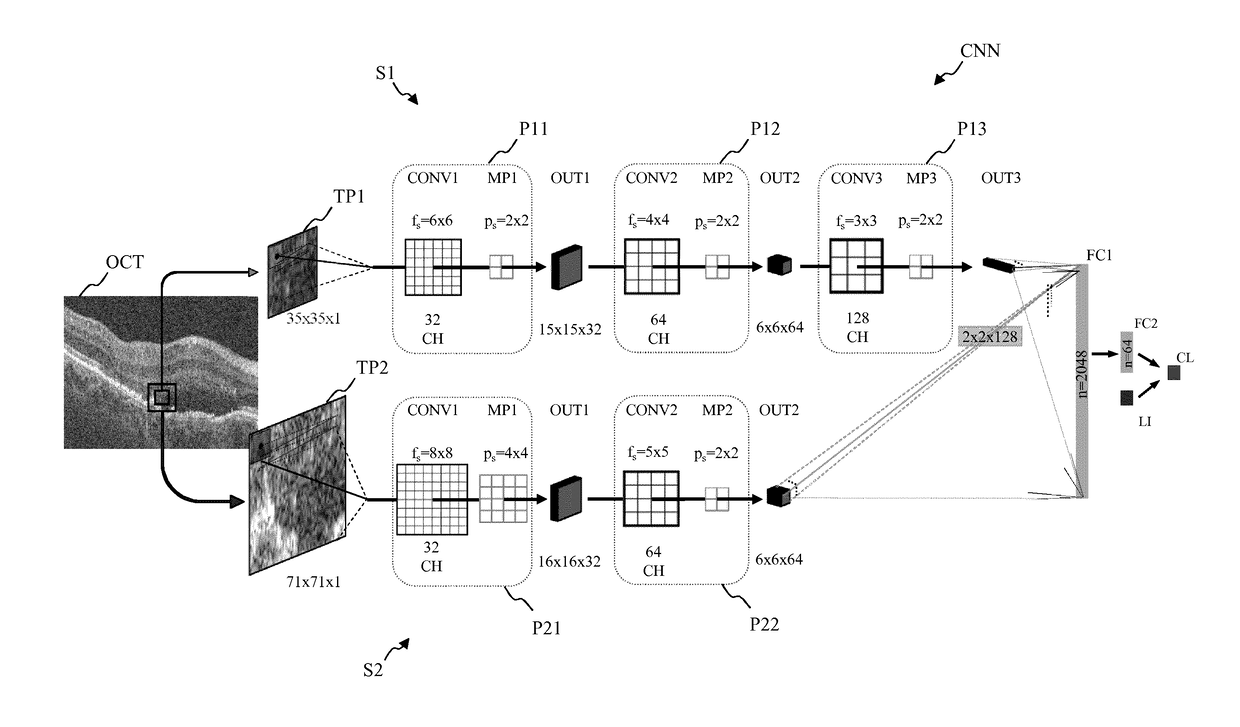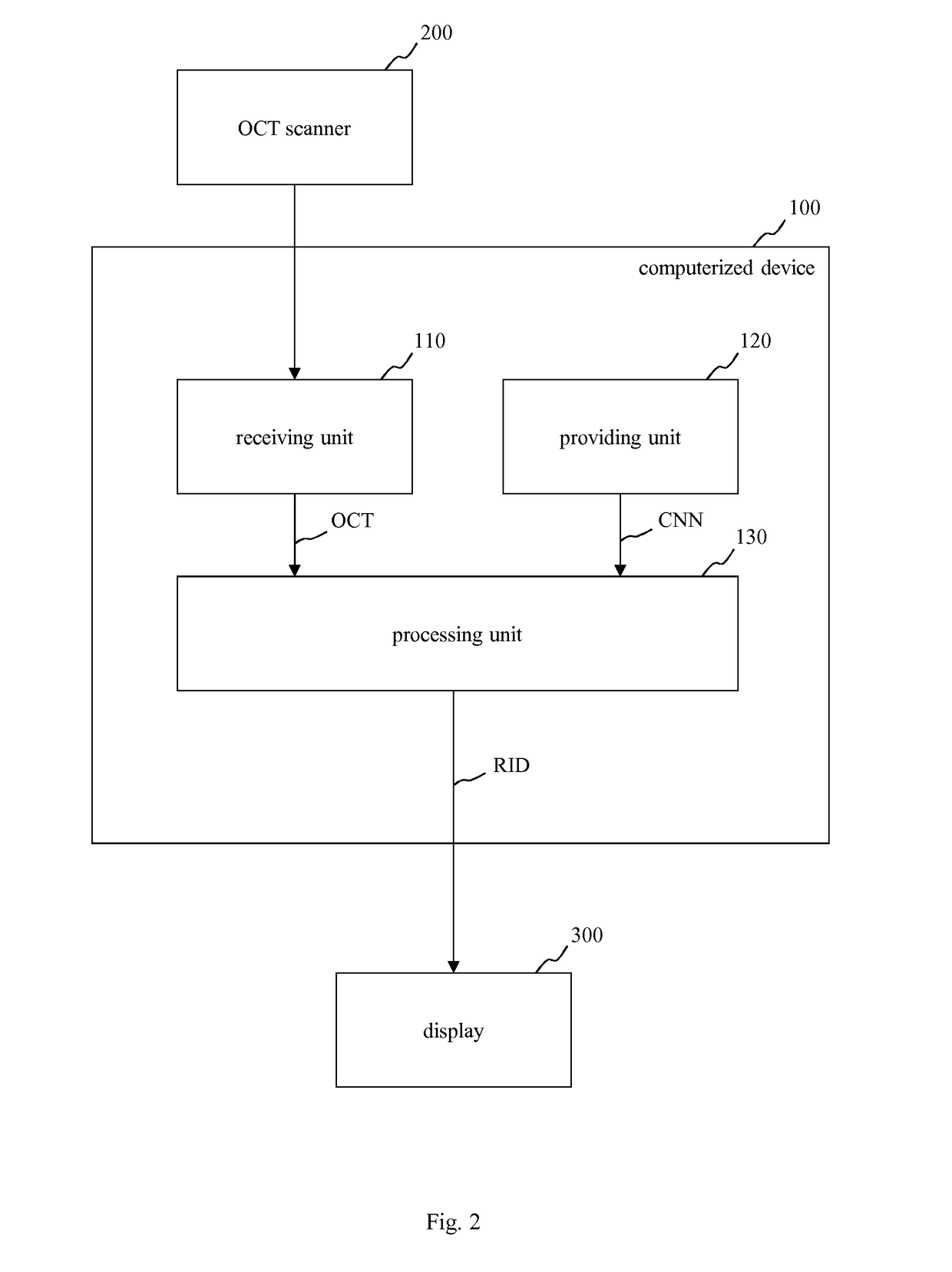Computerized device and method for processing image data
a computerized device and image data technology, applied in the field of image data processing, can solve the problems of severe vision loss, the method described in reference [1] has disadvantages in the calculation speed and the necessary accuracy, and achieve the effect of enhancing the accuracy of the processing uni
- Summary
- Abstract
- Description
- Claims
- Application Information
AI Technical Summary
Benefits of technology
Problems solved by technology
Method used
Image
Examples
first embodiment
[0063]In FIG. 4, a schematic view of a convolutional neural network CNN that may be used by the computerized device 100 of FIG. 1 is depicted.
[0064]The convolutional neural network CNN of FIG. 4 may be trained by a plurality of two-dimensional image patches TP1 extracted from a number of spectral-domain optical coherence tomography images OCT. As shown on the left side of FIG. 4, the respective two-dimensional image patch TP1 is extracted from said spectral-domain optical coherence tomography image OCT and input into a layer stack S1 of the convolutional neural network CNN. The layer stack S1 of FIG. 4 has three pairs P11, P12 and P13 of convolutional layers CONV1-CONV3 and respectively succeeding max-pooling layers MP1-MP3.
[0065]As shown in FIG. 4, the two-dimensional image patch TP1 has a size of 35×35. Further, as shown in FIG. 4, the resulting outputs OUTk of the k pairs of convolutional layer CONVk and max-pooling layer MPk are the inputs of the succeeding layers (with kε[1, 2,...
second embodiment
[0068]FIG. 5 shows a schematic view of a convolutional neural network CNN which may be used by the computerized device 100 of FIG. 1.
[0069]In contrast to the embodiment of FIG. 4, the convolutional neural network CNN of FIG. 5 includes two different layer stacks S1 and S2. The layer stack S1 uses first two-dimensional image patches TP1 extracted from the optical coherence tomography data OCT. For example, said first two-dimensional image patches TP1 have a size of 35×35, respectively.
[0070]The second layer stack S2 uses second two-dimensional image patches TP2 having a size of 71×71. In particular, the different two-dimensional image patches TP1 and TP2 have different sizes, here 35×35 and 71×71, but are centered at the same position, respectively.
[0071]As shown in FIG. 5, the outputs of both layer stacks S1, S2 are connected densely with all neurons of the first fully-connected layer FC1. As in FIG. 4, the location information LI are fed jointly with the activations of the second f...
PUM
 Login to View More
Login to View More Abstract
Description
Claims
Application Information
 Login to View More
Login to View More - R&D
- Intellectual Property
- Life Sciences
- Materials
- Tech Scout
- Unparalleled Data Quality
- Higher Quality Content
- 60% Fewer Hallucinations
Browse by: Latest US Patents, China's latest patents, Technical Efficacy Thesaurus, Application Domain, Technology Topic, Popular Technical Reports.
© 2025 PatSnap. All rights reserved.Legal|Privacy policy|Modern Slavery Act Transparency Statement|Sitemap|About US| Contact US: help@patsnap.com



